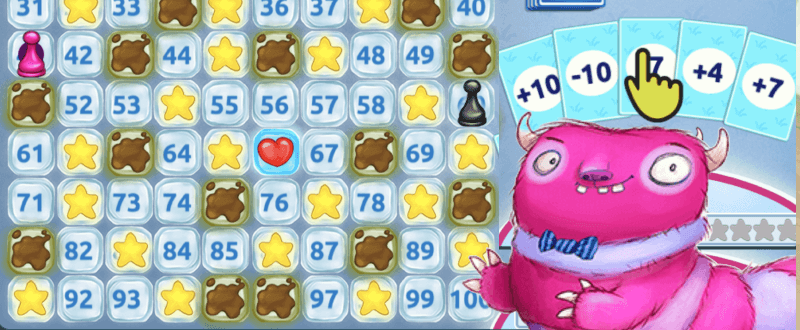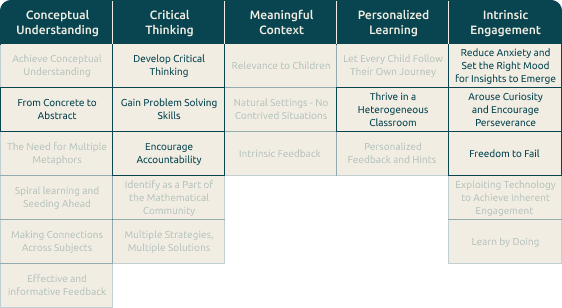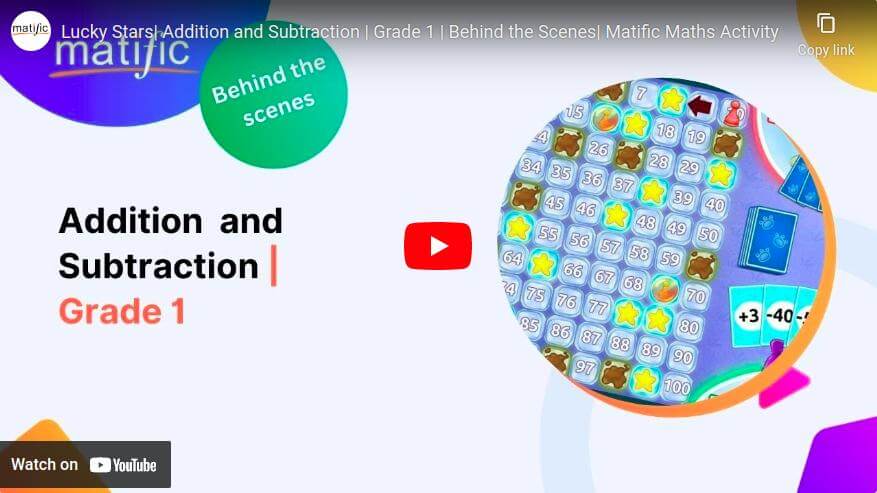
Episode of the Week: Lucky Stars (Addition and Subtraction)
Purpose of this episode
Add and subtract within 100. Recognize and make use of the patterns within the 100 board.
Description
Players take turns moving their pawns on the hundred board according to one of the five cards in their ""hand."" Each turn, players choose a card, and the pawn moves accordingly. Collect 5 stars to win. Just watch out for the mud!
What makes it great?
The game provides the motivation; the operations provide the means to winning.
In order to win, children employ critical thinking to find the best way to earn stars and avoid the mud and are accountable for the choices they make. While trying to beat their opponent, they gain problem solving skills along the way.
The game board acts as a visual aid.
The hundred board provides scaffolding for children's transition from concrete situations to abstract exercises. The animated moves following each card played arouse curiosity as they illustrate the various properties found within the hundred board.
There’s no right or wrong way to play.
This game, with no specific questions to answer, requires children to use addition and subtraction while at the same time reducing anxiety and setting the right mood for insights to emerge. The game can be played at multiple levels, making it suitable for heterogeneous classrooms. The competitive element encourages perseverance, and the game environment allows children the freedom to fail.
Mathematical Background
The hundred board, used often in the early years, provides an important platform for many types of activities that help children to develop number sense and proficiency within that range. In
particular, it allows students to observe visual patterns that support learning arithmetic, setting the stage for insights to emerge and seeding ahead to more advanced concepts such as arithmetic progressions. This game allows students to discover insights independently by visualizing the operations as moves on the board. For example, it invites children to observe that adding 10 to a number is like moving exactly one square below that number, which opens the door for more complex insights such as that adding 9 is equivalent to adding 10 and then subtracting 1. Observations like these provide a way for students to validate their thinking and gain confidence as members of the mathematical community.
Consonance with Our Pedagogical Principles

